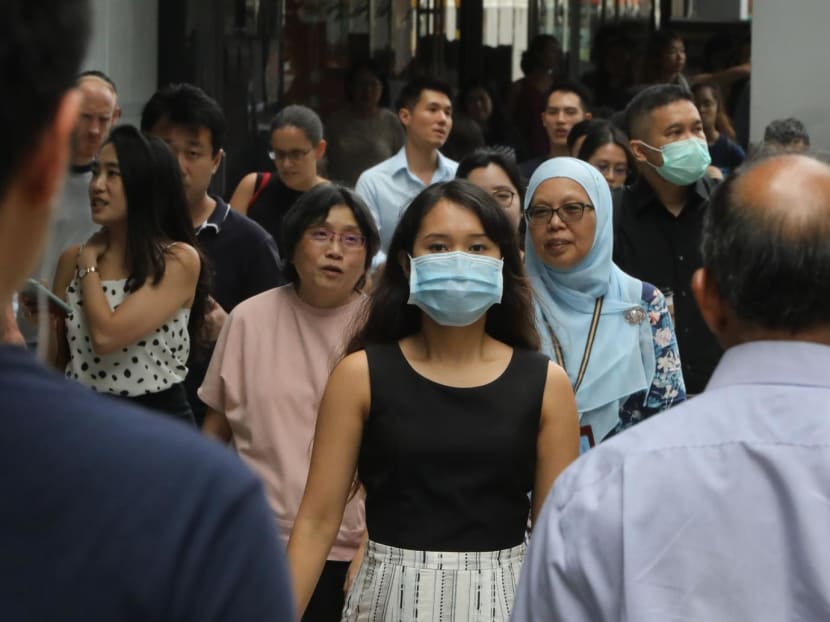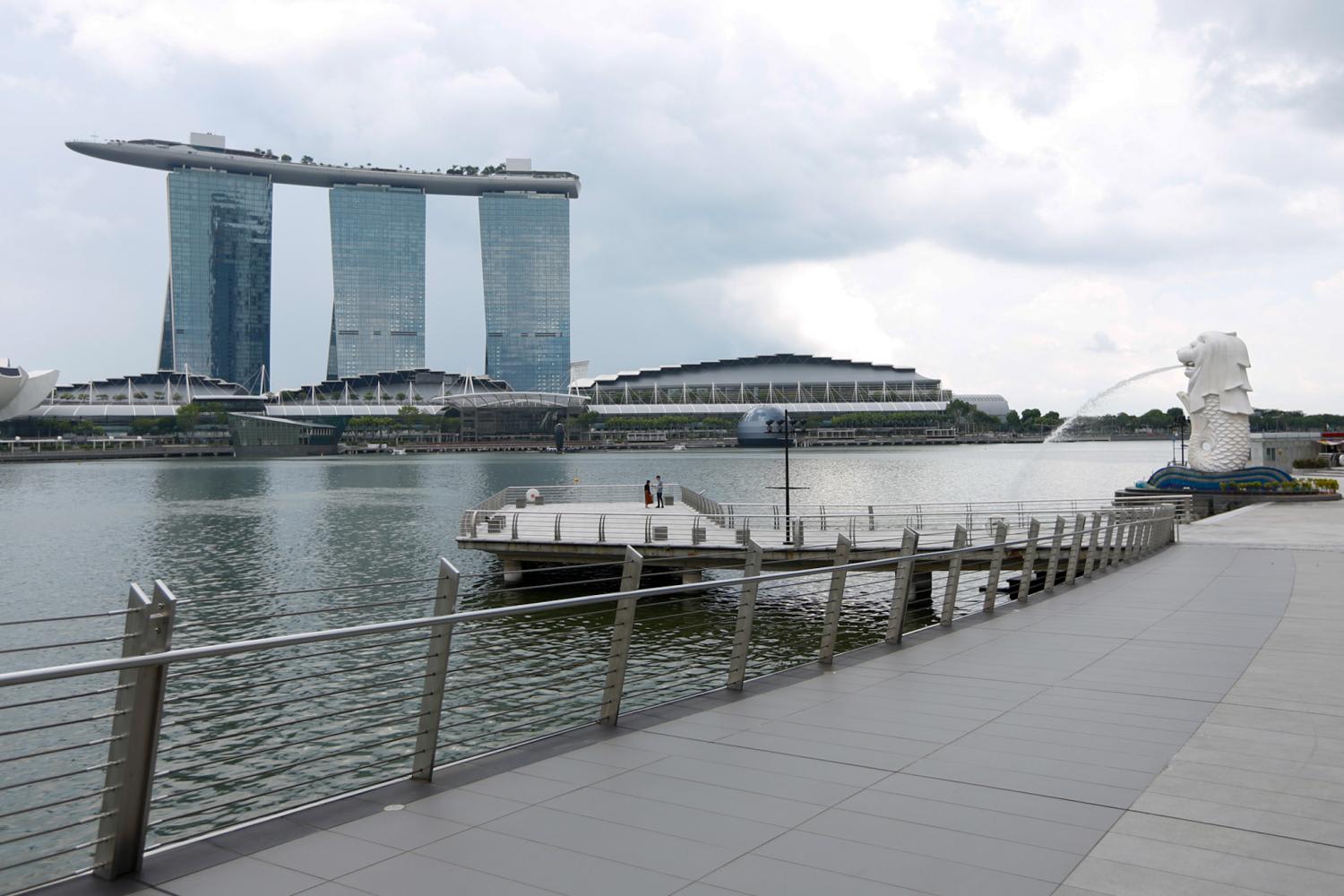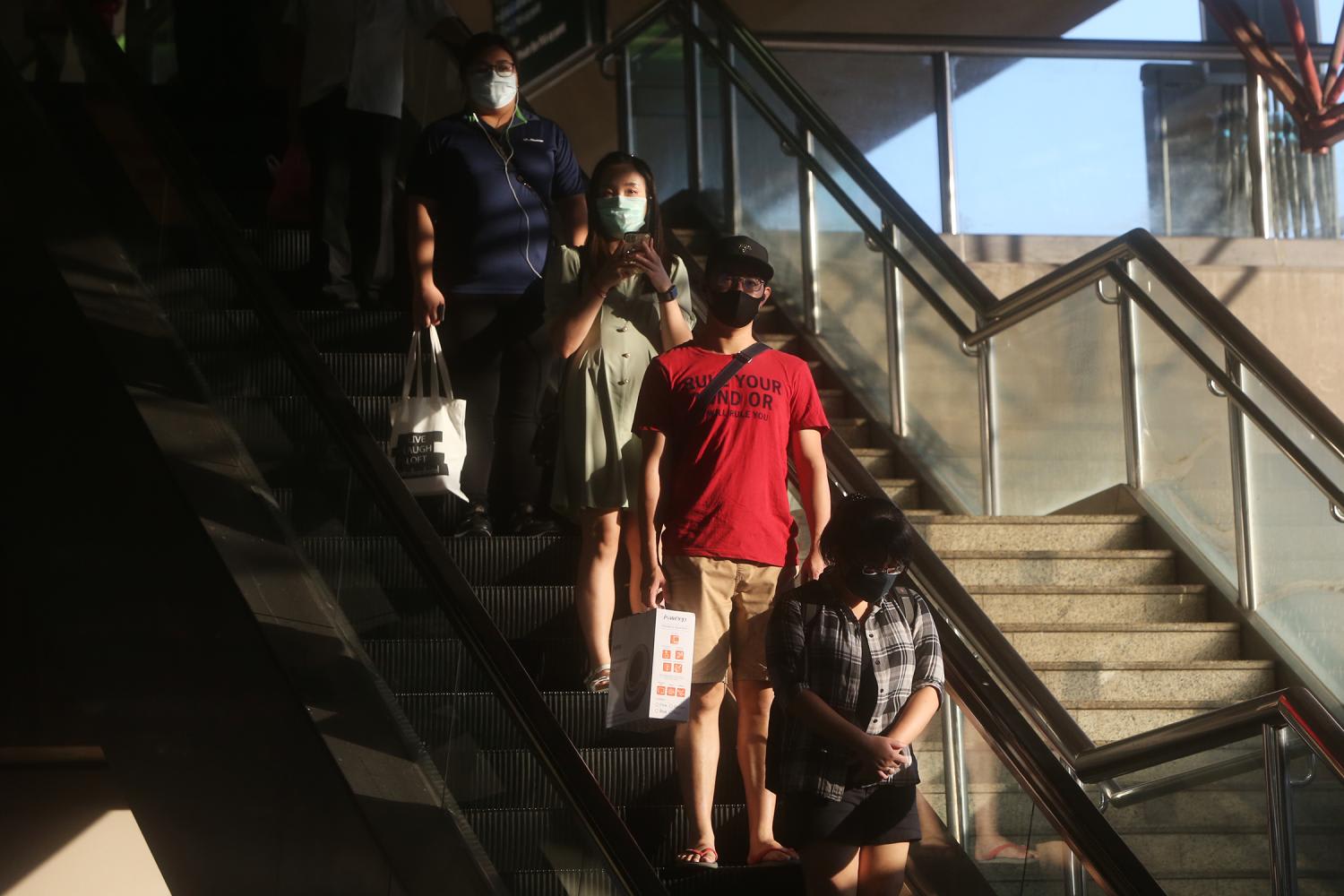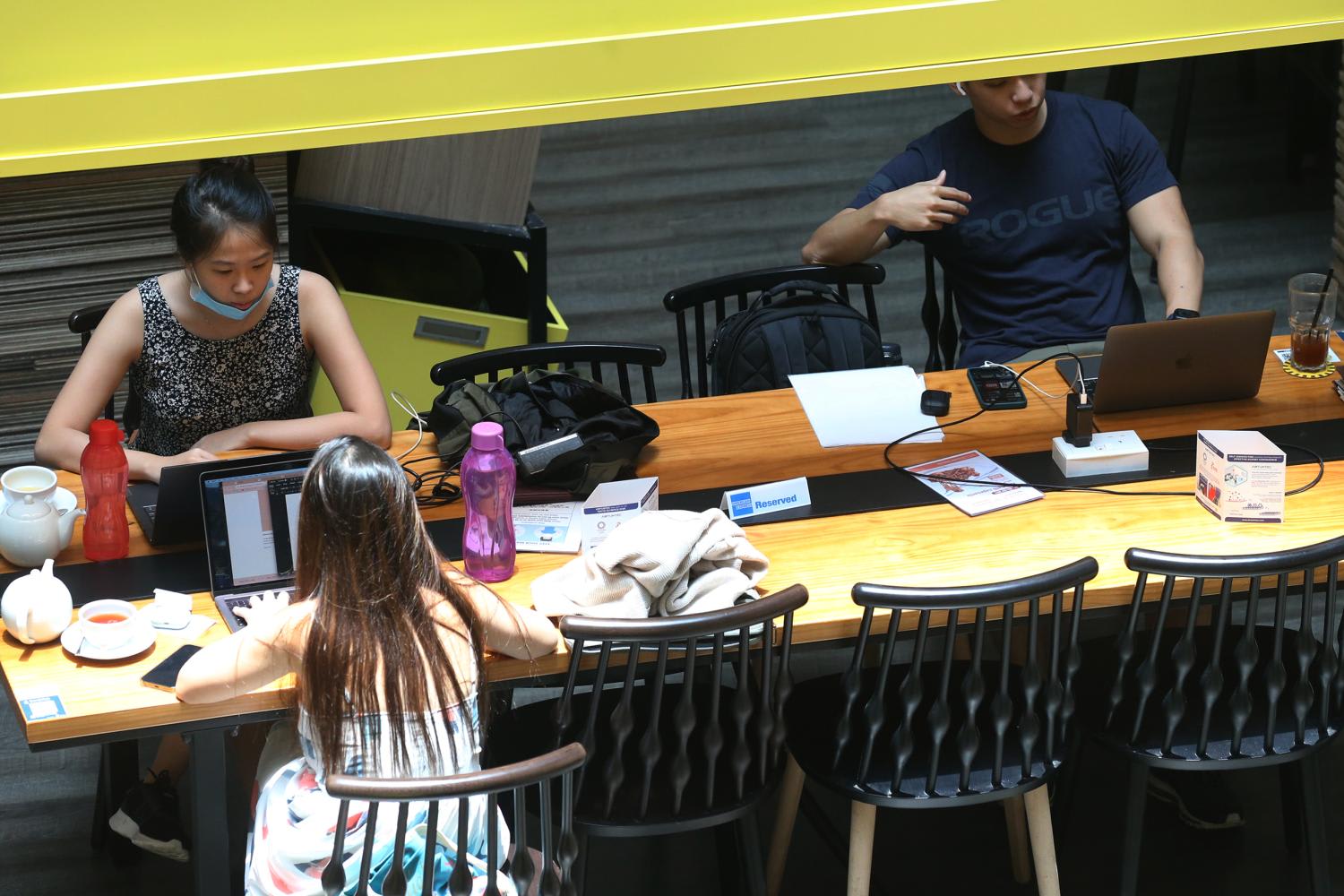The Big Read in short: Months after Covid-19 crisis, how has life changed — or not?
SINGAPORE — For a few months in 2020, Ms Ethel Chang missed out on the joys of being a polytechnic student, as Covid-19 raged around the island.

Like a bolt from the blue, Covid-19’s arrival two years ago upended life as we knew it, as infections spread like wildfire, forcing people to curtail social activities and grinding economic activities to a halt.
Each week, TODAY’s long-running Big Read series delves into the trends and issues that matter. This week, we look at how life has changed post-Covid-19 and why some behavioural changes have stuck while others have not. This is a shortened version of the full feature, which can be found here.
- Covid-19’s arrival two years ago upended life as we knew it, as infections spread like wildfire, forcing people to curtail social activities and grinding economic activities to a halt
- After several false dawns, most countries are now ready to live and let live with Covid-19, with Singapore lifting most of its pandemic-related restrictions in April this year
- While almost seven months have gone by since, some behaviours adopted over the pandemic years have stuck
- These include the adoption of telehealth, ease of doing transactions online and desire for remote working
- At the same time, other behaviours have quickly reverted to business as usual, as demand for travel recovered faster than expected for example
SINGAPORE — For a few months in 2020, Ms Ethel Chang missed out on the joys of being a polytechnic student, as Covid-19 raged around the island.
“My seniors from secondary school would talk about the school camps, co-curricular activities and events where you could meet people while studying in polytechnic... But my first day of school was sitting in front of my computer screen with barely any interaction with my classmates,” the Singapore Polytechnic student, now 19, recalled.
“I feel robbed of all these experiences I could have had if it wasn’t for the pandemic.”
So when her school resumed in-person classes towards the end of 2020, Ms Chang tried her best to make up for the lost time.
“I found it quite tough to speak up during lessons and group discussions online, so I really tried to socialise more with my classmates and lecturers once we could be back physically," she said.
While she did not like the solitude during the pandemic years, the convenience offered by home-based learning has made Ms Chang partial to hybrid work arrangements — something unimaginable for her just three years ago.
It would be a “good bonus” if her future employer could offer it, she added.
Like a bolt from the blue, Covid-19’s arrival two years ago upended life as we knew it, as infections spread like wildfire, forcing people to curtail social activities and grinding economic activities to a halt.
Governments around the world scrambled to take drastic actions, including closing their borders, to keep the pandemic at bay.

After several false dawns, most countries are now ready to live and let live with Covid-19, with Singapore lifting most of its pandemic-related restrictions in April this year.
As the new normal sets in, several pandemic-inspired changes have become a habit for some Singaporeans, even as other acquired habits are starting to be discarded.
For 49-year-old horticulturist Tan Lin Yean, the pandemic has increased her reliance on her mobile phone, helping her embrace e-payments in the process.
“Coins and cash can be quite dirty, and so can the NETs terminal buttons because you don’t know who touched it before you. But now you can pay for everything using your phone by scanning a QR code,” she said.
“I don’t worry if I don’t have my wallet with me... I just need to worry if my mobile phone is running out of battery.”
Singapore took a major step towards normalcy on April 26, when the Government lowered the Dorscon level from orange to yellow, signalling that Covid-19 is still spreading here but is typically mild or being contained.
Dorscon, or Disease Outbreak Response System Condition, was raised to orange on Feb 7, 2020.
With the lowered Dorscon level, various restrictions that people in Singapore had to live with for the past two years were lifted and some semblance of normalcy finally resumed: Everyone could return to office, mask-wearing was no longer required except on public transport, and there were no more size limits for social gatherings.
Dr Ong Suan Ee, senior health systems research and chief operating officer of think-tank Research For Impact, noted that people's behaviours can be shaped by policies such as those introduced over the period of the pandemic.
Beyond that, their personal preferences, fears, as well as peer and family influences are part of a “complex host of factors” influencing behavioural changes.
“Covid-19 had a large part to play in this because of the magnitude of its health and economic implications, and the way it forced us to adopt and adapt to new ways of interacting with one another, working, learning, consuming, and travelling,” she said.
But at the same time, some behaviours may change as people see Covid-19 infections being less of a risk, among other factors, said Dr Ong and other experts interviewed by TODAY.
As Singapore and the world settle into a state of endemicity, TODAY looks at how life has changed — or not.
EVERYDAY LIFE
- Healthcare and telehealth
Leaving home without wearing a mask feels “wrong” for Ms Chang these days, as she prefers to keep half of her face hidden while out and about.
“Initially, wearing a mask was irritating and stuffing, but now I feel more comfortable wearing it,” she said.
While she previously would have never thought of partially covering her face if she contracted a regular flu or cough, Ms Chang said that the pandemic has made her more comfortable doing so.
Similarly, while Ms Tan doesn’t wear her mask most of the time except while taking public transport, she finds herself reaching for one in a big crowd.
“I subconsciously try to keep more distance away from others and put my mask on. It’s really habitual now and I still need to remind myself I don’t need to wear it in most settings,” she said.

Beyond mask-wearing and heightened awareness of hygiene among some, Singapore’s healthcare system has also seen major changes that are here to stay, such as the growing prevalence of telehealth.
As of Nov 14, there are 178 clinics offering consultations, antigen rapid testing or both through video conferencing in Singapore, according to the Ministry of Health's (MOH) website.
While using video conferencing tools for medical consultations had been piloted prior to the pandemic, Integrated Health Information Systems (IHiS) assistant chief executive Alan Goh said the crisis served as “an impetus with accelerated adoption by both patients and providers”.
Prior to Covid-19, IHiS — which is MOH’s IT arm — had around 1,900 public healthcare patients using video consultations. The cumulative number jumped to more than 34,000 in 2020 and more than 120,000 in 2021.
The figure has continued to rise: By July 2022, about 170,000 patients had sought their doctors online.
“We see this as an opportunity to leverage the current momentum where there is now greater comfort and familiarity among residents in using digital solutions as part of their lived experience,” said Mr Goh.
- Food delivery
With staying-in being the default option for many during the depths of the pandemic, Singapore consumers spent an average of S$105.23 a month on food delivery services in 2020, more than double the year before (S$67.54), based on a survey commissioned by Deliveroo in 2021.
The trend has continued this year, based on sales volume reported by Grab, one of Southeast Asia’s biggest ride-hailing and food delivery firms.
Grab's Singapore Food and Grocery Trends Report 2022 showed that its food delivery sales volume grew 24 per cent year-on-year in the second quarter of 2022.
The company also reported that consumers used its food delivery service 1.5 times more often on average each month in the first half of 2022 as compared with the monthly average in 2019.
DIGITAL TRANSACTIONS
- E-commerce
E-commerce also benefited during the pandemic as consumers sought to get their retail fix online while being stuck at home, and its convenience continues to appeal to consumers today.
Ms Megan Ong, the director of Nanyang Polytechnic’s Singapore Institute of Retail Studies, said that its analysis shows e-commerce in Singapore will “continue to grow in the next few years” as more retailers adopt online selling as an additional channel.
“Shoppers’ willingness to make purchases online will continue to drive growth… We think these changes are unlikely to be reversed. It’s become part of our lifestyle,” she said.
According to 2022 data collected by Google, Temasek and Bain and Company, the compounded annual growth rate for the e-commerce sector in Singapore between 2019 and 2021 was 82 per cent — underlining the explosive growth during the pandemic years.
However, the compounded annual growth rate from 2021 to 2022 stood at just 4 per cent.
Earlier this month, Meta chief executive Mark Zuckerberg told the 11,000 workers whom his company laid off that they were let go partly because he overestimated the staying power of the pandemic’s e-commerce boom.
As shoppers returned to physical stores, e-commerce sales growth slowed.
Still, Ms Ong from the Singapore Institute of Retail Studies attributed the slowdown in e-commerce to the macro conditions affecting purchasing sentiment, instead of a post-Covid-19 effect.
“E-commerce will continue to grow, but with many players offering purchase platforms, there is intense competition among the platforms, and they need to drive towards productivity,” she said.
- E-payments
Unlike e-commerce, digital payment usage in Singapore has seen sustained growth since Covid-19 struck, thanks to increased digitalisation of services during the pandemic.
In response to TODAY’s queries, the Association of Banks in Singapore (ABS) said: “With the Covid-19 pandemic, e-payments which minimised physical contacts are a safe and effective alternative to make and receive payments. ABS, the Monetary Association of Singapore and the Government actively promoted the use of PayNow.”
PayNow is a secure funds transfer service that allows customers to receive money into their participating bank account via NRIC/FIN, mobile number or QR code.
In 2019, there were 67.79 million transactions made on PayNow. Transactions almost doubled in 2020 to 124.98 million, and again in 2021 to 229 million.
The number of transactions this year is set to outstrip 2021 as well — there were 220 million transactions made in the first nine months of 2022.
“We expect to continue to see healthy growth in PayNow sign-up and usage both in terms of volumes and values of transaction even as we return to normal with the resumption of physical activities. For example, in September 2022 alone, a record of S$11 billion transacted, which is a new high in PayNow’s history so far,” said ABS.
WORK-RELATED ISSUES
- Remote working
People’s attitudes towards work have also changed significantly as many were forced to adapt to working from home during the pandemic. This was something Ms Chang, the SP student, had never expected to be an option for work.
“Although it's not a must-have for me, it’s definitely a good bonus if my future employer offers hybrid work arrangements,” she said.
Such an arrangement provides a good balance between interaction with colleagues and the convenience of working from home, she added.
Several surveys have found that remote working is a must-have for many Singapore workers.
For example, the TODAY Youth Survey 2022, which polled 1,000 people aged between 18 and 35, found that close to half of the respondents would not accept a job that does not provide the option of remote working.
Similarly, a survey by recruitment firm Randstad conducted in February and March this year that two in five of its 1,000 respondents — based in Singapore and aged between 18 and 65 — would not accept a job if it did not offer remote working or flexible working hours.

- Emphasis on mental health
While working from home is convenient for many, it has also blurred the lines between work, rest and play as everything could be done within the same confined space of a home.
This had resulted in many employees feeling overworked even as they were isolated from their other colleagues at the height of the pandemic. The ensuing toll on their mental health had prompted calls for greater support for their well-being.
A survey by the Institute of Mental Health (IMH) found that about 13 per cent of respondents reported experiencing symptoms of depression or anxiety between May 2020 and June 2021, according to the Covid-19 Mental Wellness Taskforce, which was set up by MOH in October 2020.
Often neglected or ignored pre-pandemic, mental health started moving up people's list of priorities, especially when it came to work.
In November 2020, a tripartite advisory on mental well-being at workplaces was issued by the Ministry of Manpower, Singapore National Employers Federation and National Trades Union Congress. Among other things, companies were encouraged to provide employees with access to counselling services, as well as extend the scope of medical benefits coverage to include mental well-being programmes, mental health consultations and treatments.
Some companies here have also expanded their leave policies to allow for mental health days without a medical certificate, in order to encourage people to take time off when they need it and reduce stress and burnout.
MOVEMENT OF PEOPLE, GOODS ACROSS BORDERS
- Air travel and tourism
Although the risk of getting a Covid-19 infection overseas — as at home — remains high, people around the world including in Singapore have been surprisingly quick to pack their luggage for an overseas trip once shuttered borders reopen.
Experts had suggested in 2020 that people may be more cautious about travelling due to the fear of catching the virus. The International Air Transport Association had predicted in July that year that global air travel would not recover from the Covid-19 crisis until 2024.
Nevertheless, despite signs of a faster-than-expected recovery, Mr Johsua Ng, a director at aviation consultancy firm Alton, said his firm is sticking with its prediction for long-haul travel to recover fully in 2023 or 2024 amid global uncertainties.
“While we were indeed surprised by the earlier than expected easing of travel restrictions in Asia, headwinds such as the Russia-Ukraine war, inflation and supply challenges all had a dampening effect on the recovery momentum," he said. "China’s zero-covid policy will dampen traffic recovery this year and into next year at the very least globally, especially for the Asia Pacific region.”
For the Singapore Airlines group, its most recent operating results for October 2022 showed that SIA and Scoot carried a total of 2.3 million passengers that month, up 6.2 per cent from the previous month. This was 71 per cent of their pre-Covid levels in January 2020.
But it's not just holiday-goers pushing the aviation sector’s recovery forward.
While business meetings can be held online, many still prefer travelling abroad to meet their business counterparts in person — the same goes for politicians.
Prime Minister Lee Hsien Loong told reporters after the G20 Leader’s Summit in Rome on Oct 31 last year that some things can not be replicated online.
“In a Zoom conference, you cannot interrupt one another, you cannot float an idea and then see what he thinks,” he said.
"You can make a speech, I listen carefully, try and catch your facial features through the little Zoom picture, I make my speech and after we all finish speaking... well, that's a conference done."
- Diversification of supply chain, food sources
While things are looking up for the aviation sector, companies in other industries will take more time to fully recover as they shift towards diversifying their supply chain sources, said experts.
As border closures during the pandemic halted production lines, many people here and elsewhere rushed to hoard food items and toilet paper due to shortage fears. Images of snaking lines in supermarkets, both here and overseas, made the rounds and remain etched in people's minds today.
Such reminders have not been lost on countries and organisations as the world transits to an endemic state.

Said Associate Professor Tay Huay Ling, who specialises in logistics and supply chain management at the Singapore University of Social Sciences: “Supply chain disruptions will be more common and are here to stay as the global environment is more complex and volatile now."
She added: “The Covid-19 pandemic has taught companies the importance of diversifying sources, ensuring sustainability on all fronts, and increasing supply chain resilience. This means that during times of crisis, companies can sustain themselves.”
Meanwhile, some countries which depend a lot on imports, such as Singapore, have sought to diversify their food sources.
The Singapore Government is also working to increase local production of food, with a "30 by 30" initiative first launched in 2019. Under the initiative, the aim is to locally produce 30 per cent of nutritional needs by 2030.








